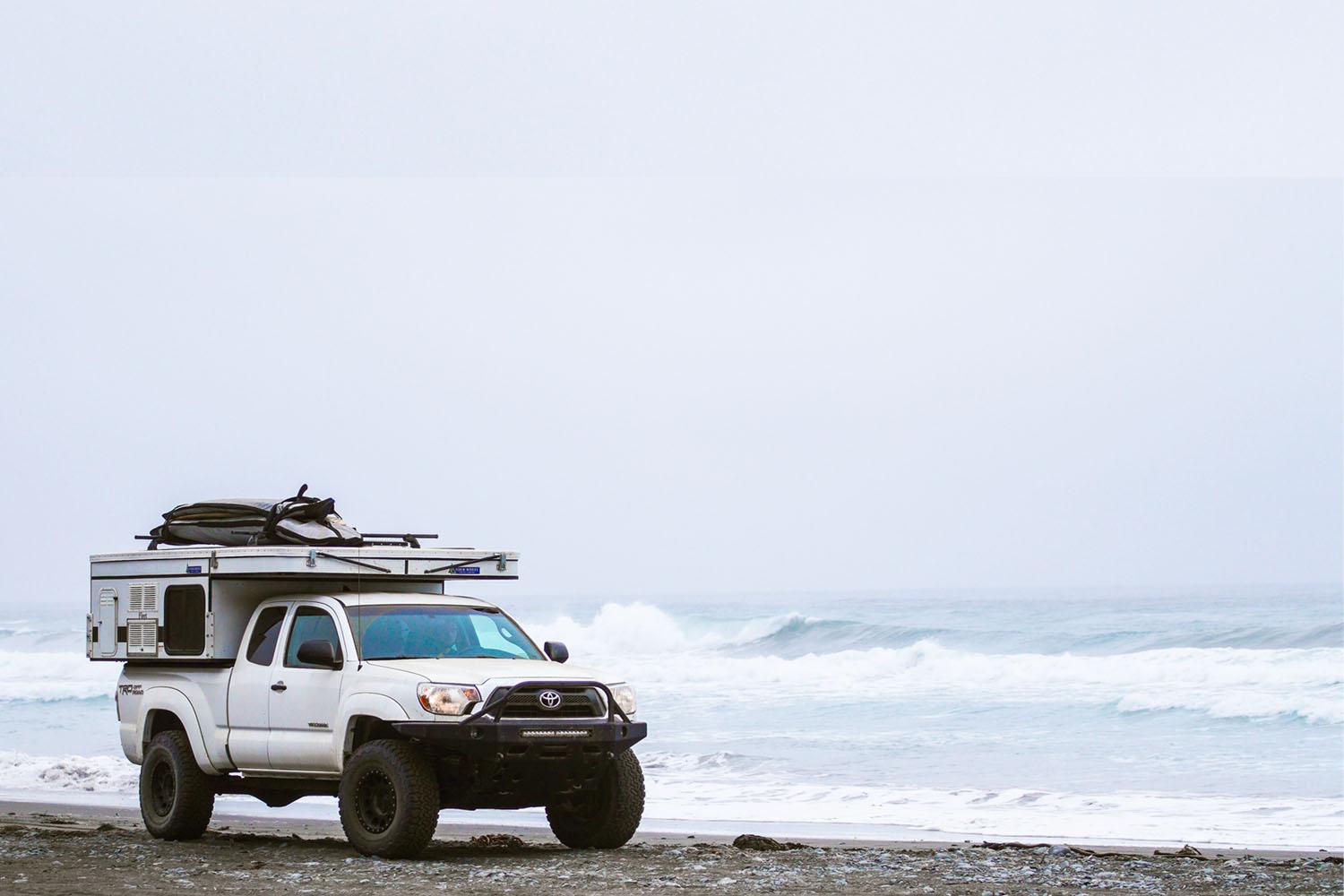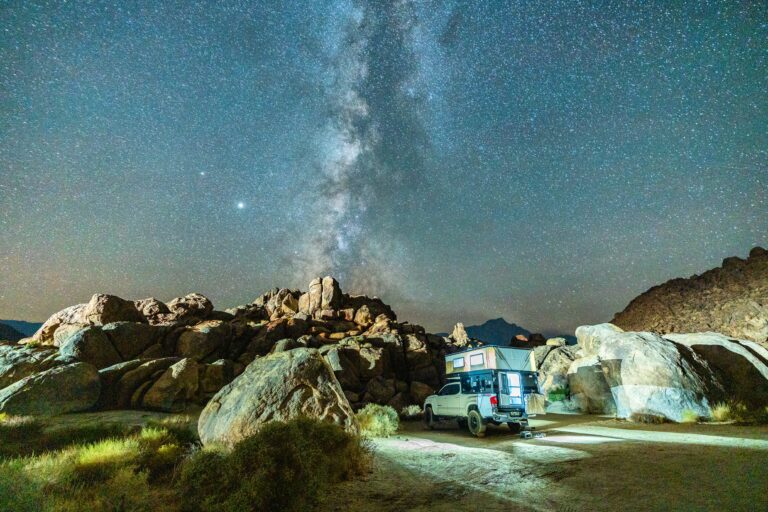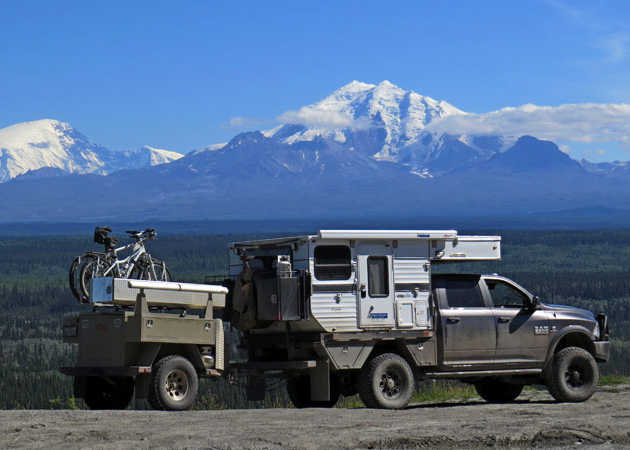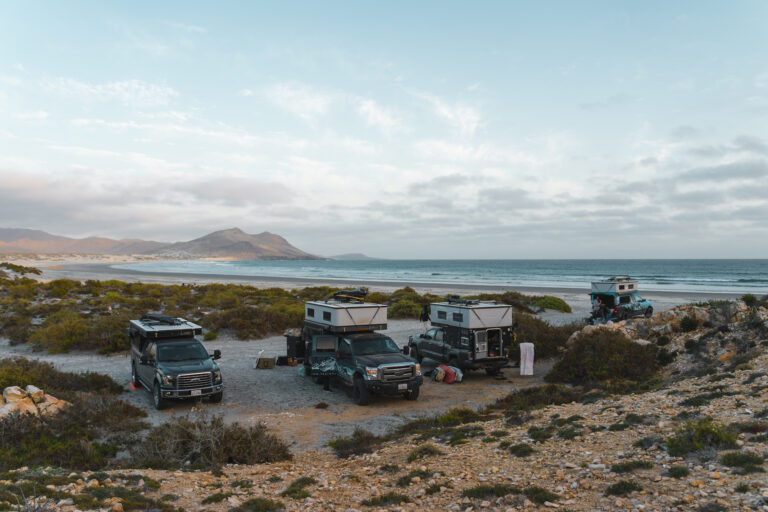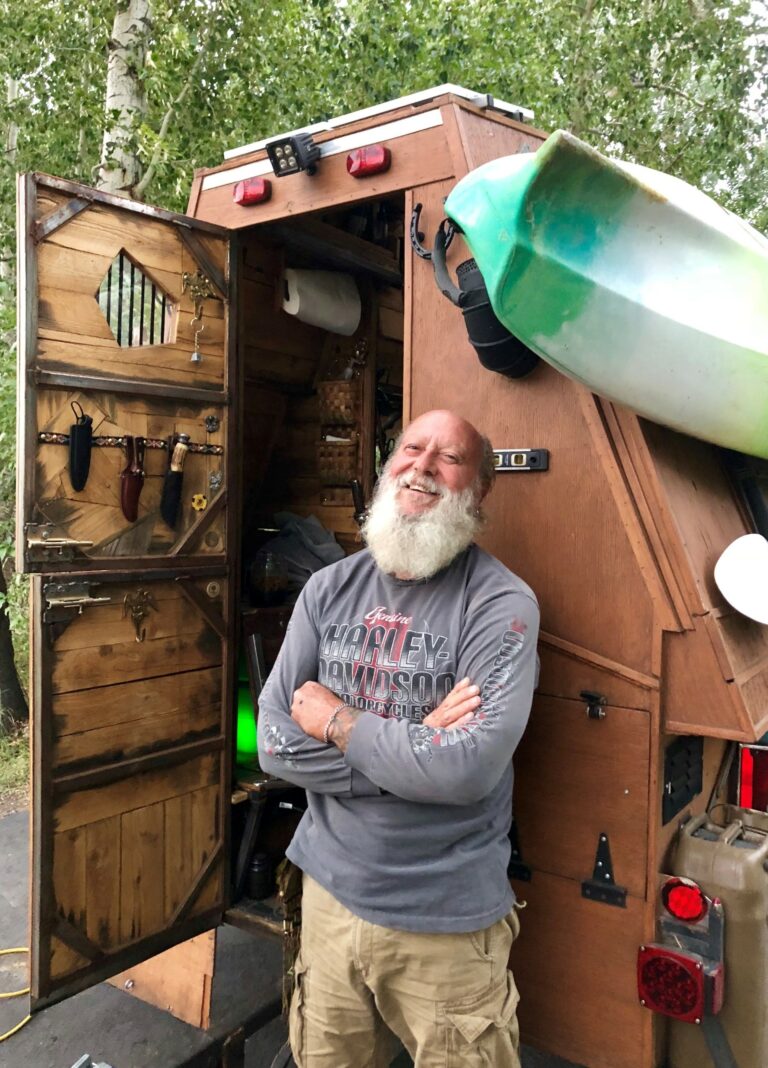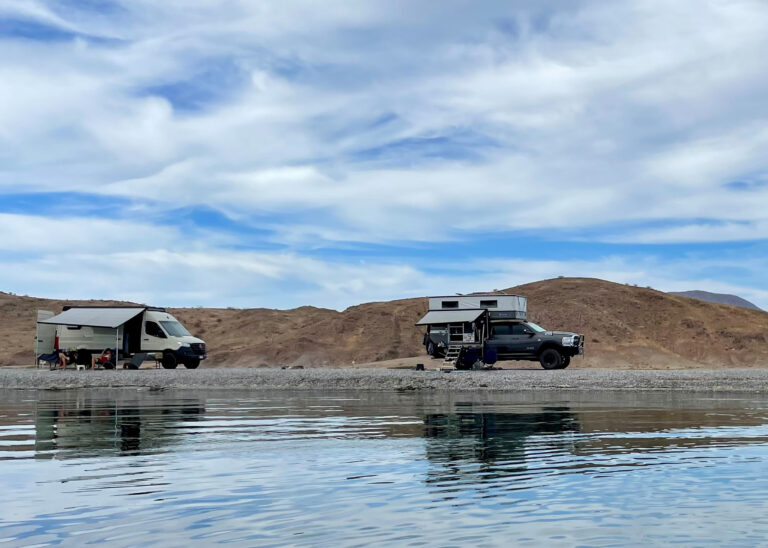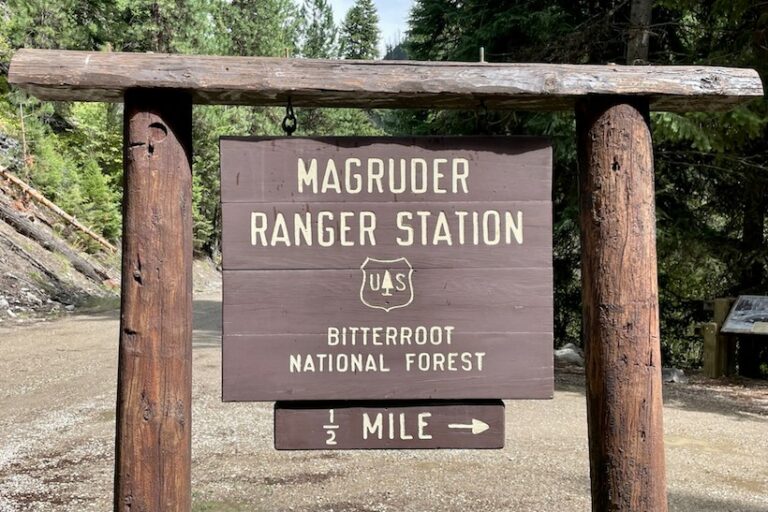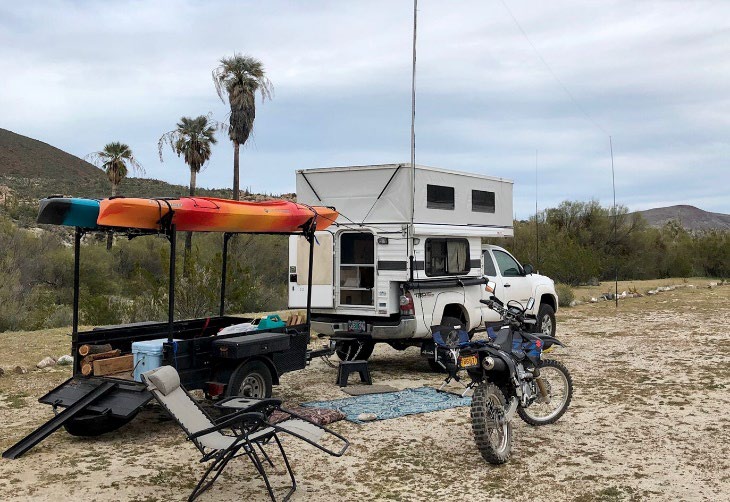
Four Wheel Truck Campers & Turtleback Trailer A Dynamic Duo
By Gary Matos
My wife once told me that there is nothing wrong with owning two motorcycles—as long as they serve different functions. That led to the purchase of a KLR650 in addition to my dirt bike. I promptly pocketed this axiom of wisdom for the future. Eventually, I decided to see if would apply to trailers.
Background
Most of our travel is done in our truck camper—a RAM 3500 6.7L Cummins diesel equipped with a Norweld Aluminum Tray and a Four Wheel Camper (FWC) Hawk Flatbed. It is our custom home-on-wheels and is equipped to take use of just about anywhere we want to go. The under bed and dinette seat storage in the flatbed camper are game changers. Even our dog has ample lounging room among the gear packed in the second seat of the cab. For an average exploration trip, we lack little. In the event an extra box of firewood or bag of dog food is needed, we have somehow found room.
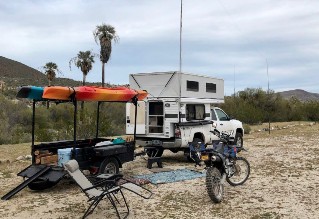
We discovered the need for a camping trailer a decade ago. At that time, all of our overlanding was done in a Toyota Tacoma equipped with a FWC Fleet slide-in camper. It was reliable, lightweight and very capable. But, it did lack storage—especially on longer trips where we bridged the cusps of two seasons. We eventually tired of moving duffel bags of clothes and gear to free up a little more floor and counter space. So, we built our first camping trailer. We sure learned a lot along the way. The intent of this article is to highlight some design features worth considering if you plan on adding a camping trailer to your own overland stable.
Our first Baja Buggy started out as a semi-custom 4×7-foot heavy duty utility trailer with a 3500 pound rear axle. It was just the right size to hold two motorcycles without hauling any unnecessary width or length. It tucked behind our Tacoma/Fleet like a baby opossum to her mom. 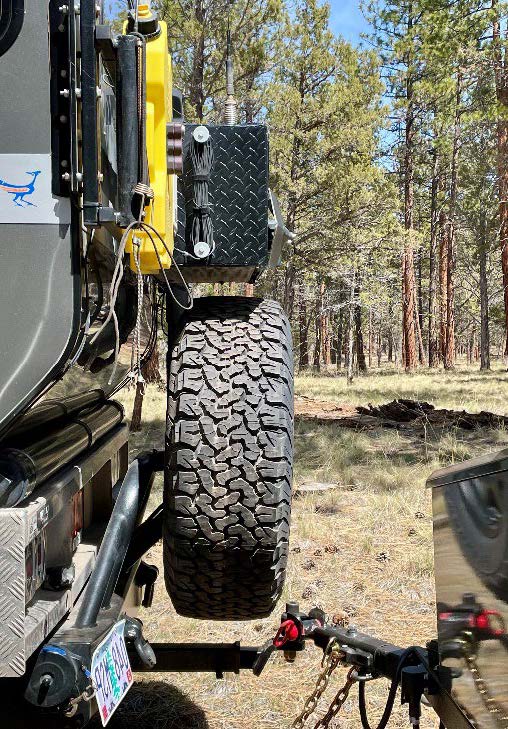
Aside from the enhancements, we kept notes on a few obvious flaws that would continue to plague the Baja Buggy. First, the solid axle design proved tougher than the contents. On several occasions our motorcycles sprung free from their tie downs after hitting a big pothole or rock. Other times,
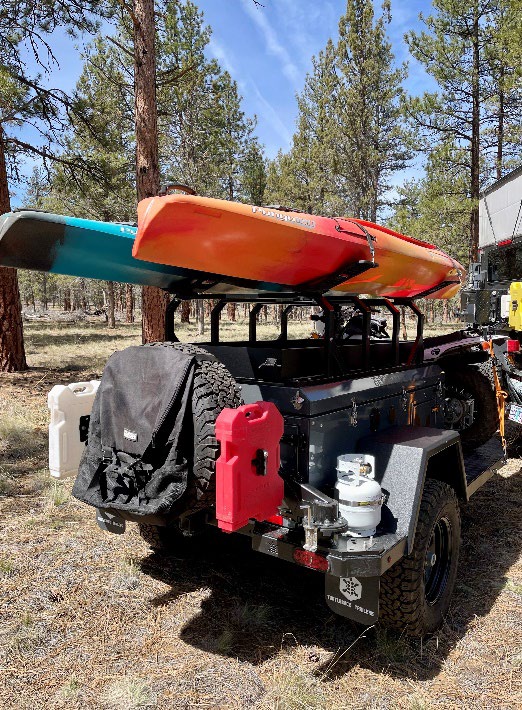
our kayaks were precariously hanging onto their supports. The harsh ride and low axle clearance of the buggy prevented our truck from going into some off-the-beaten- path gems. On washboard roads, our friends said it danced to the “jitter buggy!” Second, storage was limited to three pickup-style aluminum bed boxes. They worked fine for small items like shoes and helmets, and provided sufficient weatherproofing but security was suspect. A hard pull on any of the lids could easily expose the contents.
Consequently, the extra cooler and wood tote were either exposed and secured or left behind—I also did not want to tell my wife, who previously proclaimed, “two can be better than one” that she had to leave her paddleboard and beach recliner behind. Finally, with each modification the weight of the trailer and contents continued to climb.
So, after years of faithful service, we sold our Baja Buggy to a friend. Although it had faithfully transported our motorcycles, kayaks and gear down the Baja Peninsula on more trips than it had lug nuts, the time had finally come to upgrade. We began by tabulating some of our key learnings and criteria.
Our Trailer Criteria
The operative word is “our.” There is an abundant number of overland oriented trailers available on the market. Prices can range from $40K for expedition style trailers (with roof top tents, kitchens, power inverters, slides etc.) down to $10K cargo boxes with an independent suspension. The choices reflect the many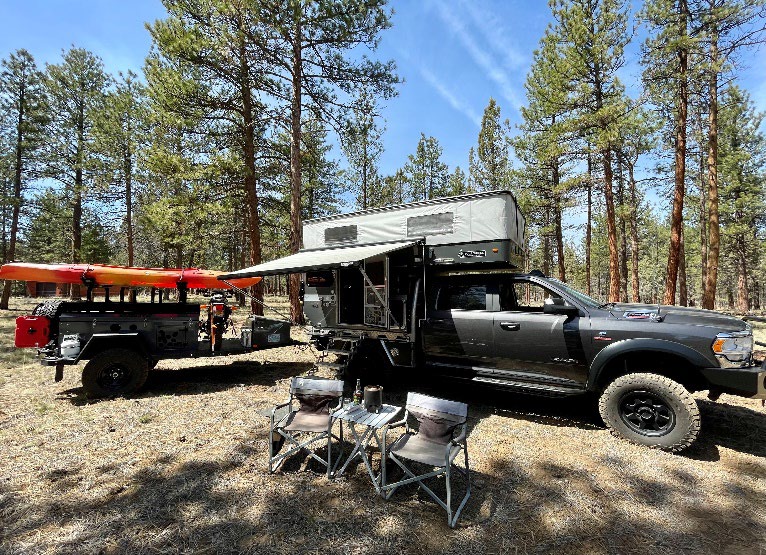
Keep it simple and practical was our mantra. Fewer components meant less to maintain or break over rough roads. Ultimately, we identified the following criteria:
-
Off-road capable independent suspension with high clearance
-
A large and secure weatherproof storage box with two access doors
-
Ability to carry a dual-sport motorcycle and two kayaks
-
On-board auxiliary power and exterior lighting
-
Easy to hitch/unhitch and backup
-
Spare tire and gas can storage
Finally, the trailer quality had to be rock solid from a proven manufacturer. Once we anchored on this criteria, the playing field was quickly narrowed.
Turtleback Trailers
Our first interaction with Turtleback Trailers (Chandler, Arizona) was in 2021 at the Overland Expo in Flagstaff Arizona. Coming off of COVID restrictions, it was an out-of-cycle year-end event and the energy was engaging. For the first time, Turtleback was showing their new Adventure trailer platform—an elongated and feature-rich version of their Expedition trailer. It was loaded with options and immediately got the gears turnings between my ears. Thought: An amalgamation of the longer platform combined with the storage box simplicity of their Getaway model could get us close to what we wanted. After a few follow-up conversations with their engineering department, Turtleback agreed to build us a custom trailer. (It turns out they were exploring several similar design options for future products so this was a win-win for both of us.)
Nate and the team at Turtleback Trailers were easy to work with. Once the feature set was firmed up and a deposit was made, our trailer was put into a relatively short build queue. During the early stages, we established checkpoints to validate the design. For example, the engineers had to modify the frame structure (between the nose and rear box) to accommodate the motorcycle bay and associated load. The following list identifies the feature set of our “Baja Turtle.”
-
Platform and Suspension: Structural steel construction, corrosion protectant, independent swing arms
-
Main Storage Box: 6x4x2-feet (48 cubic feet), HD hinge locking lid with gas-shock lift assist
-
Front Nose Box: 2x4x2-feet (16 cubic feet), HD hinge and locking lid
-
Access Doors: Small passenger side and large rear; HD hinge and locking (for cooler / quick access)
-
Power and Lights: 12 volt AGM battery, 100 watt solar panel, charging plugs and exterior lights
-
Motorcycle Bay: 3×6-feet which accommodates (1) mid-size motorcycle or two camp bikes.
-
Rear Swing Arm: Spare tire and two Rotopak fuel holders
-
Propane Holder: Fender mount, passenger side; 5-pound bottle
-
Kayak Rack: Tall configuration (to clear motorcycle), structural steel, powder coated
-
Kayak Holders: Malone SeaWing saddle style (owner supplied)
-
Tires: BF Goodrich K02 33-inchers
-
Hitch: Max Coupler
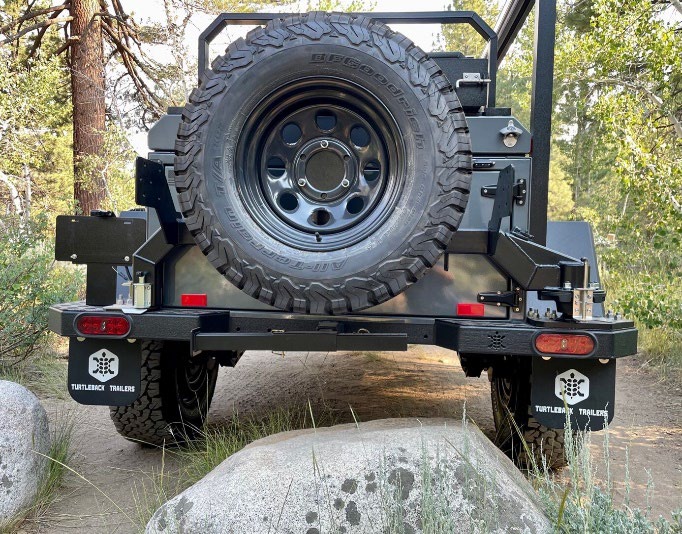
On the highway, the trailer tracked perfectly and was hardly noticeable behind the power of our diesel truck. Off the road, and after airing down, we were able to glide over wash board or heavily rutted roads. Absent was the familiar trailer hop that can affect the handling of a tow vehicle. This is where the trailer independent suspension and accompanying ground clearance really shined. Potholes and rocks shrunk under the suspension keeping the motorcycle and kayaks intact. Except for one very steep trough, that challenged the three-axis articulation of the Max Coupler, the trailer went where the truck could go.
Usage Notes
Aside from the incremental cargo capacity, there are a few other advantages of a camping trailer worth noting. For example, we keep our trailer loaded and ready to roll year round (except for a few changes depending on destination). Our auxiliary camping gear is all in one place. Aside from checking water and on-board fuel 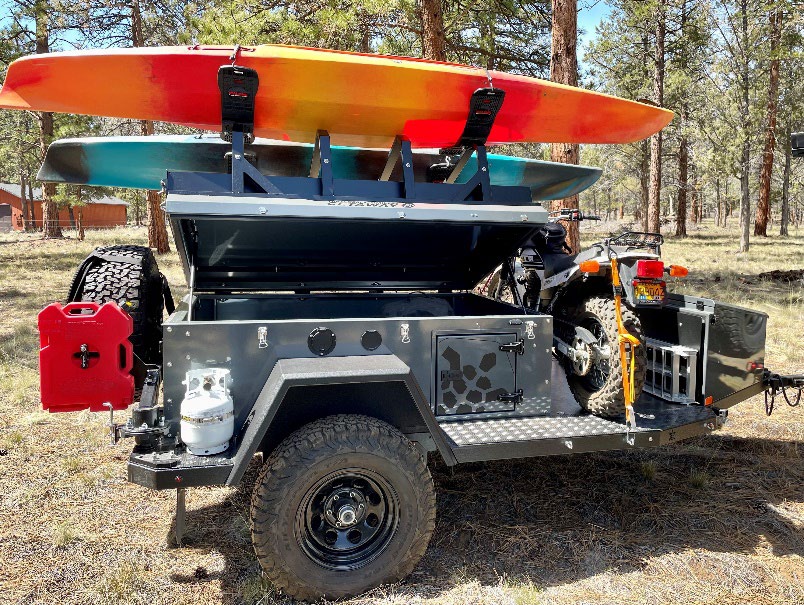
Even the downsides of towing a trailer can be mitigated with a little creativity. Case in point: when we want to explore “trailer-free” for a few days there are options. We have found RV campgrounds that will let us park our trailer for several days for a nominal fee. Combine this with laundry, water and WiFi and it quickly becomes a timely way-point. Just be sure to add a hitch and/or wheel locks to
deter theft. If inside storage is desirable, insure that the overall trailer height (including roof top tent or kayaks) will clear a standard garage door. This will significantly increase your options.
Areas for Improvement
Developing a custom trailer with CAD drawings, spec sheets and phone calls can be challenging, but is a fairly common practice. Even with experience in design, and the best of efforts, I soon found areas for improvement that I had not anticipated. A few simple things that we would do differently include:
-
Move the axle forward by 10 inches, shifting the center of gravity, making the trailer easier to move by hand when loaded.
-
Increase the rack height by 2 inches to allow the motorcycle mirrors to more freely clear the bottom of the kayaks.
-
Section the nose box so that the battery, converter, controller etc. is isolated from other gear.
Summary
In conclusion, actively participating in the build-out of your own camping trailer can be very satisfying. Besides meeting your specific needs, it will have your fingerprint on it. The fine tuning is like an analog FM dial. With just the right amount of knob twisting, the vision becomes clear. You are then ready for the next adventure.

Related News
-
Best Surf Spots in America
We’ve seen more and more surfers come up and join the Four Wheel Camper family. I mean, our slide-in campers DO make a ...
Read More -
Reasons You’ll Regret an RV in Retirement
Congratulations, retiree! Stepping into retirement is a big deal – the world is at your fingertips! You want to ...
Read More -
Four Wheel Campers Hosts Third Annual Volunteer Event in Southern Arizona
In March 2024, Four Wheel Campers returned to the Sonoran Desert for our third annual volunteer event with Friends of Buenos ...
Read More -
Best Places to Stargaze in the United States
The moment your pop up truck camper is set up, the fire is lit, and the stars arrive, is one of the best feelings, especially ...
Read More -
The Perfect Campsite Challenge
Read the Full Article
Read More -
Lightweight Pop-Up Truck Campers: Hub-and-Spoke RVing with Boundless Adventures
Read the Full Article
Read More -
8 Breweries You Can Camp At With Your Four Wheel Camper
There’s nothing like a cold brew after a long day of travel. Better yet, there is nothing better than a cold hard brew at a ...
Read More -
Veteran and his Artistic, Off-Grid Lifestyle
We know our customers are special. Four Wheel Camper customers not only appreciate quality, efficiency, and great ...
Read More -
FWC Customer Pens Emotional Tribute
We know our customers are special. Four Wheel Camper customers not only appreciate quality, efficiency, and great ...
Read More -
7 Tips for Living on The Road Full Time From Industry Experts
Sometimes it’s the little details that get overlooked when prepping to live on the road full-time in your truck camper rig or ...
Read More -
Ski Resorts Where You Can Winter Camp in the Parking Lot
Embarking on a winter camping adventure offers unparalleled satisfaction, especially when you wake up snug and on-site in ...
Read More -
A Magruder Corridor Trail Adventure
Read the Full Article
Read More

